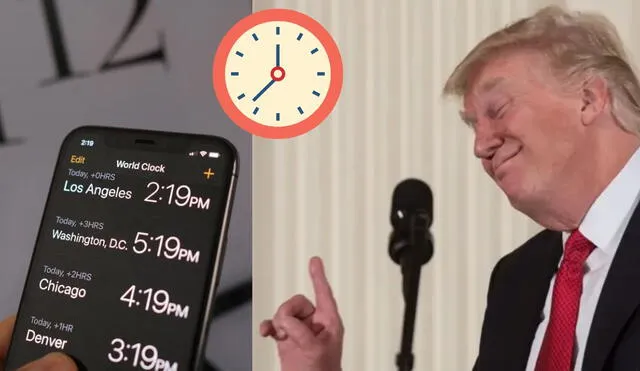Daylight Saving Time 2025: Trump backtracks on elimination plan
Millions of Americans will lose an hour of sleep as daylight saving time begins. Starting Sunday, Mar. 9, clocks around the U.S. have "spring forward" an hour at 2 a.m.

As Americans prepare to “spring forward” this Sunday, President Donald Trump finds himself entangled in an unexpected political battle—one he once promised would be simple: abolishing the practice of changing clocks twice a year. “It's a 50-50 issue, and if something is a 50-50 issue, it's hard to get excited about it,” Trump said this week after previously endorsing the change.
Trump’s vow to eliminate Daylight Saving Time (DST) has proven to be more challenging than repealing some Biden-era policies. While many Americans oppose the time shift, the debate remains over whether the nation should adopt permanent daylight saving time or permanent standard time.
Trump backtracks on Daylight Saving Time elimination plan
Billionaire Elon Musk waded into the daylight saving time debate on Wednesday by launching a poll on X, the social media platform he owns. Musk posed a question to users: if daylight saving time were abolished, would they prefer to keep the time an hour earlier or an hour later? The poll garnered over 1.3 million responses, with 58% favoring a later time and 42% opting for an earlier one.
Further polls show that while two-thirds of Americans want to end the time changes, opinions are split on what should replace them:
- Supporters of permanent daylight saving time argue it provides more evening sunlight, benefiting businesses and outdoor activities.
- Advocates for permanent standard time—including sleep experts—warn that DST disrupts circadian rhythms, increasing health risks like obesity and metabolic disorders.
“It’s very much a 50-50 issue,” Trump admitted, acknowledging concerns about children going to school in the dark in winter months if DST were made permanent. “And it's something I can do, but a lot of people like it one way, a lot of people like it the other way, it's very even, and usually I find when that's the case what else do we have to do?” he added.
A political roadblock in Congress
While Trump campaigned on ending DST, the decision ultimately lies with Congress, which has been deadlocked. In 2022, the Senate unanimously approved the Sunshine Protection Act, a bill to make daylight saving time permanent. However, many lawmakers later admitted they didn’t realize the vote was happening.
The bill stalled in the House after “Big Sleep”—a coalition of sleep experts—lobbied against it. They warned that permanent DST would cause “social jetlag,” disrupting sleep patterns and leading to higher risks of accidents, depression, and chronic health issues.
In addition to the stalemate, Biden avoided taking a stance, possibly due to his experience in 1973 when Congress attempted permanent DST but reversed it after nationwide backlash. Currently, two states, Hawaii and most of Arizona, have opted out of the semiannual time changes and remain on permanent standard time, which states are allowed to do.












